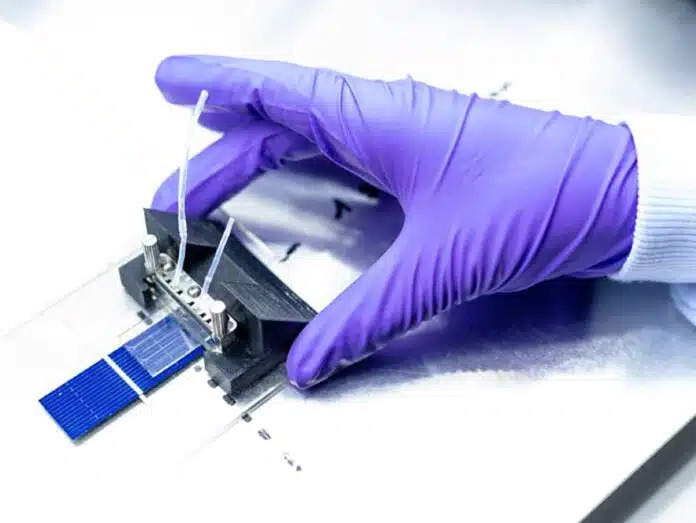Friday, 25/10/2024 | 17:36 GMT+7
In a groundbreaking development, an international research team led by ICREA professor Kasper Moth-Poulsen from the Department of Chemical Engineering of the Universitat Politècnica de Catalunya — BarcelonaTech (UPC) at the Barcelona East School of Engineering (EEBE) has unveiled a revolutionary solution.

MOST-PV hybrid device. Credit: Paulius Baronas
The team has created the world’s first hybrid device, called MOST (molecular solar thermal energy storage systems), that combines a silicon solar cell with an innovative storage system. This cutting-edge breakthrough not only addresses the pressing issues but also paves the way for a new era of sustainable energy storage. The remarkable findings of this research have been prominently featured in the esteemed journal Joule.
The innovative MOST system harnesses the power of organic molecules, which, when exposed to high-energy photons like ultraviolet light, undergo a remarkable chemical transformation, effectively storing this energy for later use. What sets this system apart is its dual function: not only does it facilitate electricity generation, but it also provides cooling to the photovoltaic cell by acting as an optical filter, blocking photons that would otherwise cause heating and reduce system efficiency.

Researchers Lorette Fernandez and Helen Hölzel testing a hybrid MOST-PV device at UPC.
Furthermore, the MOST system stands out for its use of common elements such as carbon, hydrogen, oxygen, and nitrogen, making it a sustainable and environmentally friendly energy storage alternative, unlike other technologies that rely on scarce materials.
The latest device represents a significant leap in energy efficiency. In experimental tests, it has achieved a remarkable energy storage efficiency of 2.3% for molecular thermal solar energy, setting a new record. What’s more, the integration of this hybrid system is projected to reduce photovoltaic cell temperature by up to 8 °C, thereby cutting energy losses due to heat and boosting efficiency by an impressive 12.6%.
In fact, the combined device boasts a solar utilization efficiency of up to 14.9%, marking a substantial improvement over two separate hybrid solar systems.
By combining photovoltaic energy with molecular thermal storage, this innovation doesn’t just enhance energy efficiency; it also helps to reduce reliance on fossil fuels and minimize the environmental impact associated with other forms of energy storage, such as batteries based on scarce and polluting materials.
This hybrid device is poised to meet the escalating demand for clean energy and efficient storage, signifying a significant stride in the energy transition.
According to Techexplorist








 Scaling Up Energy Efficiency Models in the Textile Industry
Scaling Up Energy Efficiency Models in the Textile Industry
 Indonesia aims to reduce emissions through building industry
Indonesia aims to reduce emissions through building industry
.jpg?w=367&h=206&mode=crop) 2024 Energy Efficiency Awards Launching Ceremony
2024 Energy Efficiency Awards Launching Ceremony
 Energy Savings in the Seafood Processing Industry
Energy Savings in the Seafood Processing Industry
 VSUEE Project Implementation Promotional Measures: Challenges and Opportunities
VSUEE Project Implementation Promotional Measures: Challenges and Opportunities
 Promoting innovative startups in the field of energy efficiency
Promoting innovative startups in the field of energy efficiency
 Vietnam accelerates action on climate change, strengthens COP26 commitments
Vietnam accelerates action on climate change, strengthens COP26 commitments